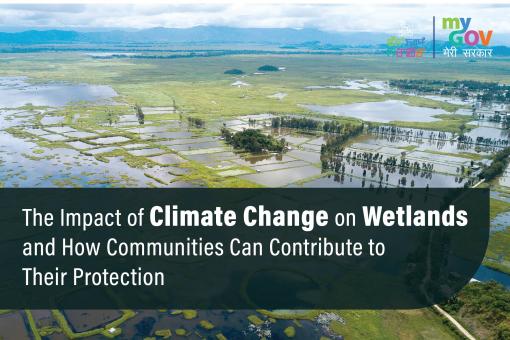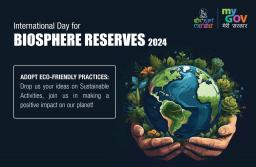Open Forum
- Department of Art & Culture
- Creative Corner
- Department of Agriculture
- Department of Education
- Department of Fisheries
- Department of Horticulture & Soil Conservation
- Department of Information Technology
- Department of MAHUD
- Department of Science & Technology
- Department of Sericulture
- Department of Tourism
- Department of Trade Commerce & Industries
- Department Of Transport
- Directorate of Health Services
- Finance Department
- Forest Department, Government of Manipur
- General Administration Department
- Imphal Municipal Corporation
- Manipur Fire Service
- Manipur Police Housing Corporation Limited (MPHC Ltd.)
- Open Forum
- Social Welfare Department
The Impact of Climate Change on Wetlands and How Communities Can Contribute to Their Protection
Start Date: 02-02-2025
End Date: 09-05-2025
As global temperatures rise and weather patterns change, wetlands are facing unprecedented challenges. We invite all community members, environmentalists, and policy advocates to ...
Hide details













BrahmDevYadav 10 months 2 weeks ago
How does climate change affect the wetlands?
Coastal wetlands will also be impacted by sea level rise and changes in water chemistry. Those changes can alter wetland conditions and processes, including the types of habitat they provide, and their ability to manage water quality and flooding.
BrahmDevYadav 10 months 2 weeks ago
What are the characteristics of the wetlands?
Wetlands are areas that are covered by water or have waterlogged soils for long periods during the growing season. Plants growing in wetlands are capable of living in saturated soil conditions for at least part of the growing season.
BrahmDevYadav 10 months 2 weeks ago
What is a simple definition of a wetland?
A wetland is a place in which the land is covered by water salt, fresh or somewhere in between either seasonally or permanently. It functions as its own distinct ecosystem. You can recognize wetlands from other types of land or bodies of water primarily by the vegetation that has adapted to wet soil.
BrahmDevYadav 10 months 2 weeks ago
Why do ecosystems need protection and how are they protected?
Ecosystems such as forests and oceans play a crucial role in absorbing and storing carbon dioxide, helping to reduce the impacts of climate change. Conservation efforts such as reforestation and ocean conservation can help to mitigate the effects of climate change and protect our planet.
BrahmDevYadav 10 months 2 weeks ago
What are two human activities that disrupt wetland ecosystems?
Human impact on the environment may result from pollution, dams, deforestation, desertification, and overpopulation. Wetlands and riparian areas have experience significant human impact over the past 100 years as the human population and industrialization increased.
BrahmDevYadav 10 months 2 weeks ago
What is climate change remediation?
Climate change mitigation involves actions to reduce or prevent greenhouse gas emissions from human activities. Mitigation efforts include transitioning to renewable energy sources, enhancing energy efficiency, adopting regenerative agricultural practices and protecting and restoring forests and critical ecosystems.
BrahmDevYadav 10 months 2 weeks ago
What is the purpose of World Wetlands Day?
It is celebrated to raise awareness among all sections of the society about values and functions of wetlands, utilization of their resources and their environmental importance. Each year, a global theme is adopted to focus attention and help raise public awareness about the value of wetlands.
BrahmDevYadav 10 months 2 weeks ago
What is the purpose of World Wetlands Day?
It is celebrated to raise awareness among all sections of the society about values and functions of wetlands, utilization of their resources and their environmental importance. Each year, a global theme is adopted to focus attention and help raise public awareness about the value of wetlands.
BrahmDevYadav 10 months 2 weeks ago
What are the objectives of wetlands?
Wetlands are vital for humans for other ecosystems and for our climate, providing essential ecosystem services such as water regulation including flood control and water purification. More than a billion people across the world depend on wetlands for their livelihoods.
BrahmDevYadav 10 months 2 weeks ago
How to stop pollution in wetlands?
1. Volunteer:- Get involved by joining a clean-up in your community and spread the word.
2. Respect natural areas.
3. Reduce, reuse and recycle.
4. Reduce polluted runoff.
5. Be smart about lawn and garden fertilizer.
6. Use non-toxic products.
7. Choose native plants.
8. Protect wetland habitat.